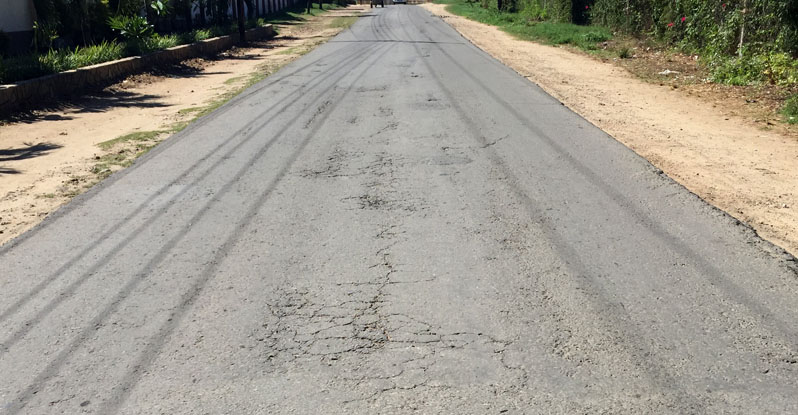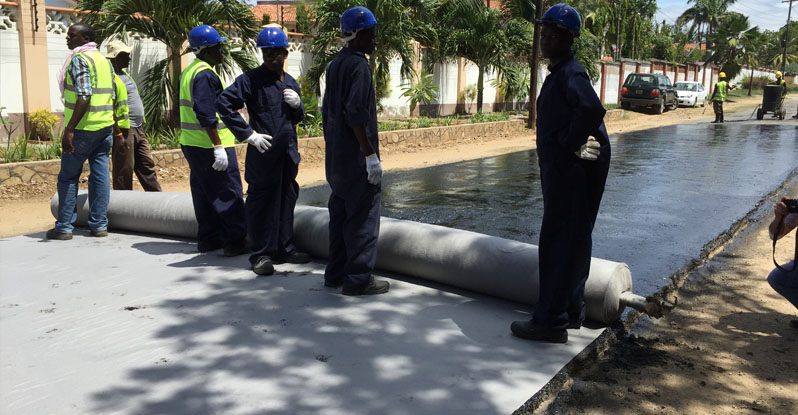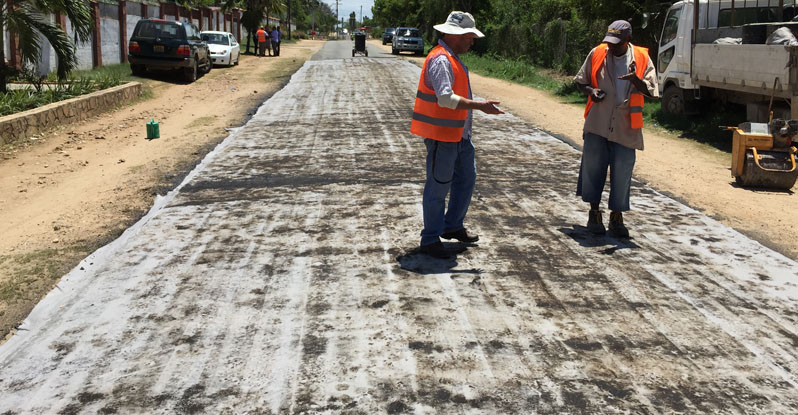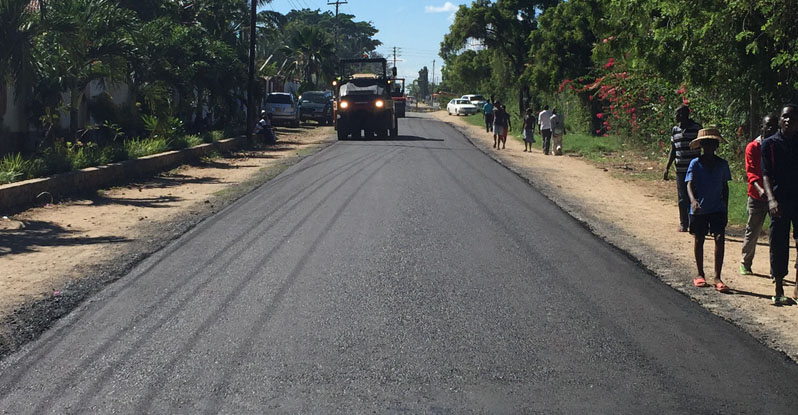Building roads and maintaining their condition has always been a constant battle in several developing countries. Kenya is rapidly developing and becoming a strong economic contender among African Nations. Its infrastructure is under strain as communities expand. Among other difficulties facing the construction industry, costs remain high and therefore not surprisingly the practice of maintenance is like gold dust; a rarity.
One of GEA’s goals is to raise awareness for geosynthetic engineering in East Africa and break the stigma that this alternative method of construction is ‘expensive’ when in reality it is just the opposite. It provides a cost alternative solution to conventional construction with the performance of the earthworks matching, and in most cases, exceeding conventional expectations.
In order to demonstrate this, GEA spearheaded a trial project for the Mombasa County civil engineers at the Ministry of Public Works (MoPW), department of Roads and Transportation. The MoPW was invited to select a trial section of heavily trafficked road which was in dire need of maintenance. They selected 100m mid-section of Beach Road linking Mamba Village roundabout and Moyne Drive. The road section had reflective, longitudinal cracking and several potholes. A perfect trial section to demonstrate the ease of installation, performance and low-maintenance benefits of using stress-relieving geotextiles aka SAMI (stress-absorbing membrane interlayer) to re-surface roads.


Stress-relieving geotextiles are designed to eliminate reflective cracking of new asphalt by absorbing differential movements in the asphalt layers. It also protects the subsoil from water intrusion in the old asphalt layer causing loss of bearing capacity. Without the geotextile interlayer, reflective cracking of the new asphalt overlay will occur and surface water will enter the old layer. This only accelerates the deterioration of the entire road construction, leading to what we all dread while driving; potholes.
The installation of the geotextile interlayer can be done with manual labour and no need for specialized equipment. A dream job for developing areas in East Africa where skilled labour and resources can be hard to come by. Once the existing pavement (concrete or asphalt) is swept clean, any potholes and cracks are properly patched and levelled. A bituminous tack-coated is applied to the old road surface and the geotextile is then applied by simply unrolling the fabric. The interlayer is then ready to receive the new asphalt overlay. For further details on the installation, check out our step-by-step demonstration video below.


Geotextiles East Africa was extremely proud to complete the trial project at the start of 2015 and the new road surface’s performance is continually being monitored over the years, with the results proving to be a great success. The project set a bench mark for road maintenance and GEA continues it’s efforts to enlighten engineering consultants and professionals alike, on the proven capabilities of geotextiles in roads construction.